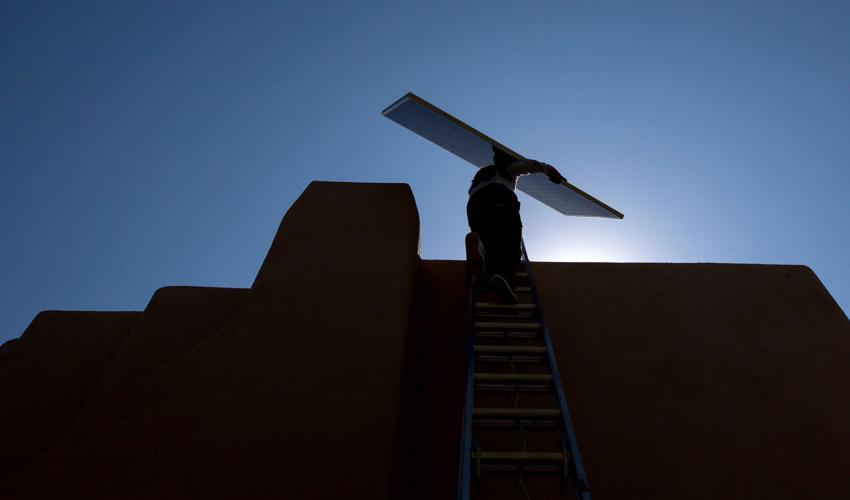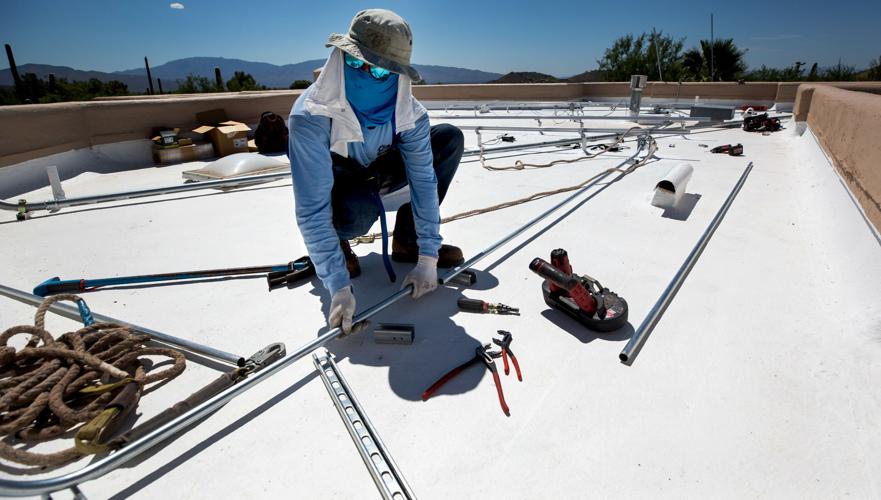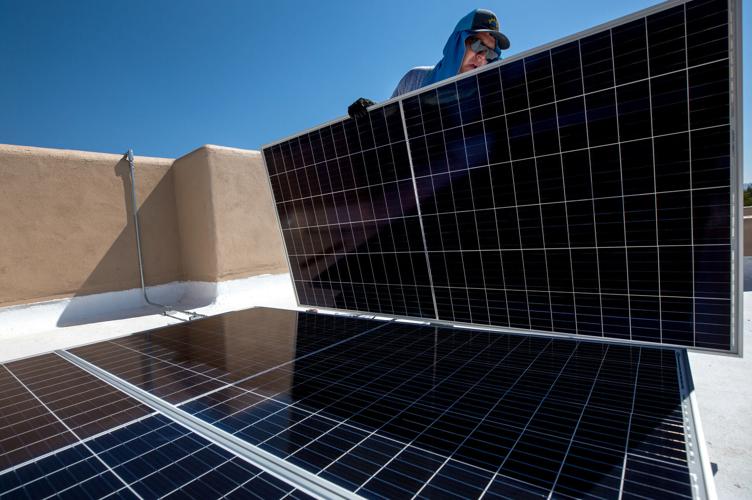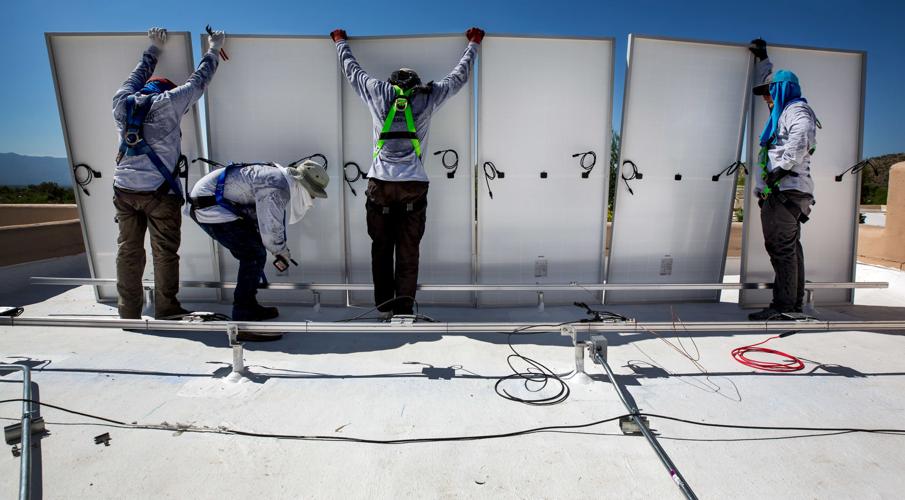Chris Knutson was excited at the prospect of installing solar panels on his Vail home to do his part to help save the planet.
But Tucson Electric Power turned down his application because there was already too much rooftop solar on his neighborhood power circuit.
TEP has been rejecting some new applications under new state rules governing how rooftop solar systems and other renewable-energy systems get connected to local utility grids.
The new rules, which were adopted by the Arizona Corporation Commission last November and went into effect in February, are aimed at streamlining the process with “fast-track” approval procedures for so-called distributed energy generators — mainly rooftop solar photovoltaic systems.
But one new rule limiting the solar generating capacity on any one neighborhood circuit has prompted TEP to reject some solar applications in areas where solar installations have reached a certain maximum capacity.
TEP says the rules are needed to protect the system from damage due to an excessive amount of power being exported back on the main power grid, which could affect service and pose a safety hazard to utility workers.
“The intent of the rules, the idea is that the rules allow for a fair processing of all the interconnection applications while making sure there’s no impact to the reliability of the grid or service to customers,” TEP spokesman Joe Barrios said.
The neighborhood solar capacity rule has led to the rejection of applications in 11 areas of Tucson that already have reached solar “saturation,” according to TEP.
The only option for many customers in those areas is to install a battery system to store excess power rather than exporting it back to the grid, which exempts them from the rule.
Local solar installer Kent Bauman of Solar Solution AZ said that since implementing the rules in February, TEP has turned down solar interconnection applications filed for six of his prospective customers, or about 10% of applications his 8-year-old company has filed.
“If they believe there is already enough solar on that circuit, the only way the homeowner can participate is if they agree to pony up a $10,000 battery,” Bauman said.
Turned down
Knutson, a Solar Solution customer, said he was looking forward to installing a 10-kilowatt solar array on the Vail home he shares with his wife and three children.
Then he got a letter from TEP, rejecting his application because his neighborhood “feeder” power line had reached its maximum total solar generating capacity.
“It was kind of a bummer because we weren’t really doing it to lower our electric bills, we were trying to be more ‘green,’” said Knutson, who works as a computer network administrator.
Knutson decided to go ahead and buy a companion battery system. Now, he’s cleared TEP’s approval process and is awaiting final county permits to install the system.
Bauman sees TEP’s actions as part of a broader move by utilities to tamp down rooftop solar to protect their monopolies, and he says “insidious and subtle policies” set by the Corporation Commission staff are deterring the shift from fossil fuels to renewables like solar.
“It’s just part of the death march” for rooftop solar, Bauman said.
Barrios said TEP supports customers who want to install solar — but reliability and safety is a priority.
“We understand customers want solar, and we are happy to help them with interconnection,” said Barrios, noting that about 27,000 of TEP’s roughly 450,000 customers have solar generating systems tied to the utility’s grid.
“It’s not that we’re opposed to rooftop solar; we just have more to worry about than any individual system,” he said.
Review process to help
Barrios said TEP has set up a “supplemental review” process which may help some customers qualify for interconnection through alternative measures of capacity, including a measure of minimum daily demand on a circuit.
Since that process became available in mid-April, TEP has received about 1,200 applications for customer solar interconnections and denied about 6% of them, with some qualifying under an alternative screening measure, he said.
Bauman said he hasn’t seen other utilities his company works with, such as Arizona Public Service and Trico Electric Cooperative, reject customers on the basis of the new screening rules.
APS spokeswoman Jenna Rowell said the Phoenix-based utility has been following the new rules but hasn’t rejected any applicants because of them.
Trico also has been following the interconnection rules and in late June filed its revised interconnection manual for approval by the Corporation Commission, said Laree St. Onge, Trico manager of public affairs and sustainable energy programs.
Trico’s previous interconnection procedures already included some of the qualification screens, including the 15% peak load limit, St. Onge noted.
“We were already doing some of that as it was,” she said, noting that about 2,800 of the co-op’s 43,000 mostly residential members have grid-connected rooftop solar systems.
“Currently, no one has been affected by those requirements, but as we move down the road, they could be,” St. Onge said.
Following the rules
An official of a statewide solar-energy industry trade group said TEP isn’t applying the new interconnection rules properly.
“Bottom line is, TEP is not following the ACC’s interconnection rules and is making up their own,” said Court Rich, a Phoenix attorney and board member of the Arizona Solar Energy Industries Association. “They are not treating projects the same way APS is, and it is costing Tucson residents that want rooftop solar a bunch of money or even stopping them from doing it.”
Rich said AriSEIA plans to file a letter with the Corporation Commission questioning TEP’s application of the new interconnection rules.
Barrios said TEP officials were not initially sure if the 15% peak-load rule applied to residential solar, but later asked the Corporation’s Utilities Division and was told the screens applied to residential and commercial systems alike.
“There was a screening process in place for commercial interconnections, but the concept of applying them to residential installations is new to us,” he said.
The new Interconnection of Distributed Generation Facilities Rules set up fast-track processes for interconnection of customer-owned renewable energy systems like solar and wind, and generally were supported by utilities, the solar industry and other stakeholders over a rulemaking process that took several years.
But the rules also set up a series of “screens” renewable energy systems must clear before being approved for interconnection, which are recommended by the Federal Energy Regulatory Commission and used in many states.
The first screen, known as Screen A, prohibits the interconnection of a customer-owned generator — typically, a rooftop solar array or a wind generator — if the total generation on the circuit, including the new system, would exceed 15% percent of the annual peak load, or demand, on the circuit.
Other screens are based on factors including the rated capacity of the transformer on the circuit and the ability of a line to weather short-circuits.
Seeking compromise
The Arizona rules are similar to those adopted in other states and include screens, including the 15% peak-load limit, based on standards developed by the Federal Energy Regulatory Commission.
A 2018 study of interconnection practices among 11 Western states found that eight states required the 15% peak-load screen, in addition to other fast-track review screens, and many states provide for a supplemental review process.
Arizona, Idaho and Wyoming had no fast-track interconnection rules at the time of the study.
Though years in the making, the screening provisions of Arizona’ new interconnection rules took many solar supporters by surprise.
Tucson solar installer Kevin Koch closely watches proceedings at the Corporation Commission and was a formal party to TEP’s solar rate case in 2018, but he said the screening rules and their application to residential customers wasn’t on his radar.
Koch, CEO of the Technicians for Sustainability, said TEP has rejected about eight to 10 of his prospective solar customers because of the new rules, though utilities have used similar screens in the past.
“Some screens have been helpful; others are limiting in some way, but at least we knew about them — this one sort of squeaked by,” he said. “This is one of these things that is categorically excluding fairly large sections of Tucson (from adopting solar).”
Koch said it’s worth trying to get the Corporation Commission to revisit the issue.
“I’m sure there’s some compromise we could put before the commission,” he said.
Since the interconnection case is now closed, opponents of the new rule would have to persuade the Corporation Commission to reopen it for reconsideration, or start a whole new proceeding.







